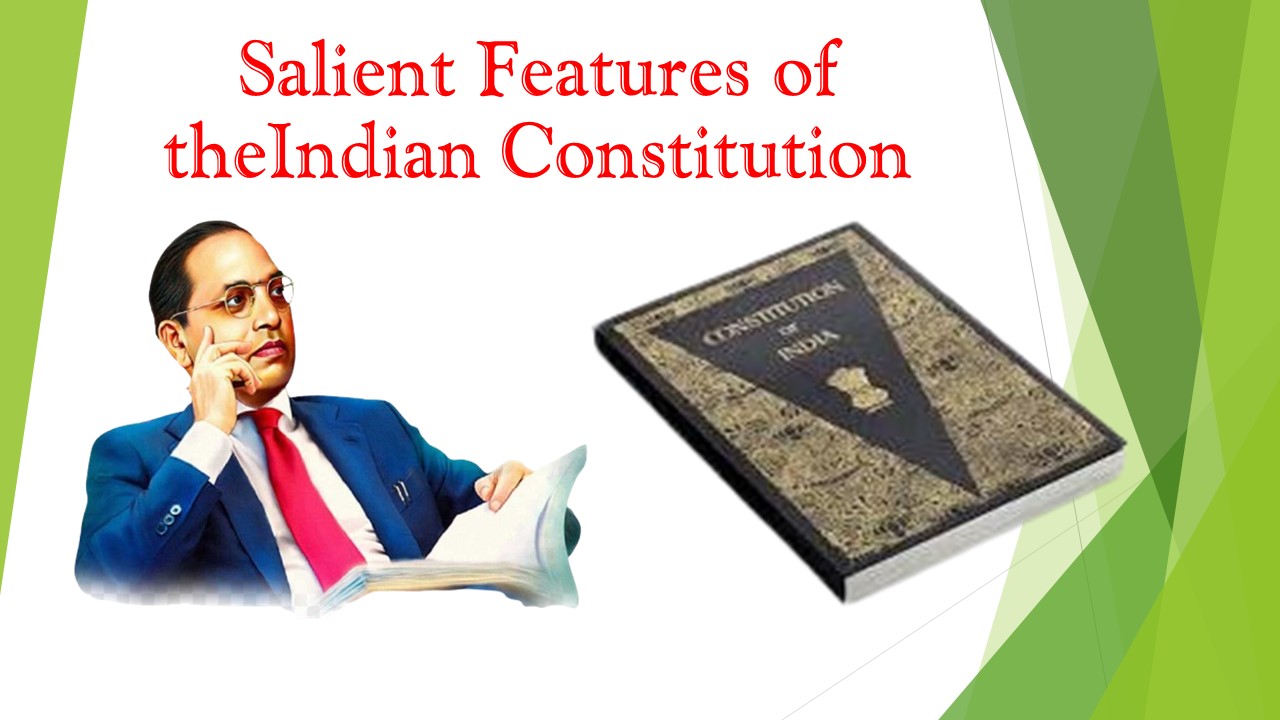
Salient Features of the Indian Constitution
DemocracyAtGrassrootsThe Indian Constitution is a unique document that blends the best features of many global constitutions while tailoring them to India’s specific historical, social, and cultural context.
1. Lengthiest Written Constitution
- It is the most detailed constitution in the world.
- Originally had 395 Articles in 22 Parts and 8 Schedules (now has 470+ Articles in 25 Parts and 12 Schedules).
- Covers a vast range of topics due to India’s diversity and complexity.
2. Drawn from Various Sources
- Incorporates features from many foreign constitutions:
- UK: Parliamentary system, Rule of Law.
- USA: Fundamental Rights, Judicial Review, Independence of Judiciary.
- Canada: Federal system with a strong Centre.
- Ireland: Directive Principles of State Policy.
- Australia: Concurrent list, language of the preamble.
3. Federal System with Unitary Bias
- India is a Union of States (Article 1).
- Division of powers between Centre and States (Union, State, and Concurrent Lists).
- In times of emergency, the Centre becomes more powerful.
4. Parliamentary System of Government
- President is the constitutional head; Prime Minister is the real executive.
- Based on the principle of collective responsibility.
- Two Houses: Lok Sabha (lower) and Rajya Sabha (upper).
5. Fundamental Rights (Part III)
- Guarantees six basic rights to all citizens (Articles 12–35), such as:
- Right to Equality
- Right to Freedom
- Right against Exploitation
- Right to Freedom of Religion
- Cultural and Educational Rights
- Right to Constitutional Remedies
6. Directive Principles of State Policy (Part IV)
- Guidelines for government to promote social and economic democracy.
- Not enforceable by courts but fundamental in governance.
7. Fundamental Duties (Part IVA)
- Added by the 42nd Amendment (1976).
- Lists duties of citizens towards the nation (e.g., respecting the Constitution, national flag, and anthem).
8. Secular State
- The State has no official religion.
- All religions are treated equally.
- Secularism is explicitly mentioned in the Preamble.
9. Independent Judiciary
- Judiciary is free from executive and legislative control.
- Supreme Court is the guardian of the Constitution and protector of Fundamental Rights.
- Provides for Judicial Review.
10. Single Citizenship
- Unlike the federal system of the USA, Indian citizens have only single citizenship, i.e., Indian citizenship (Article 5-11).
11. Universal Adult Franchise
- Every citizen 18 years or older has the right to vote without discrimination.
12. Emergency Provisions
- Three types of emergencies can be declared:
- National Emergency (Article 352)
- President’s Rule (Article 356)
- Financial Emergency (Article 360)
13. Amendability (Part XX)
- Constitution is neither too rigid nor too flexible.
- Amendments can be made by a special majority (Article 368), with some requiring ratification by states.
14. Preamble to the Constitution
- Declares India to be a Sovereign, Socialist, Secular, Democratic, Republic.
- Aims to secure Justice, Liberty, Equality, and Fraternity for its citizens.
15. Three-tier Government
Promotes grassroots democracy
Ensures better service delivery
Increases accountability and transparency
Encourages people’s participation in decision-making
Source of Indian Constitution: Click Here
What is meant by the Three-Tier Government in India?
Ans: It refers to the system of governance with three levels:
Local Government (Rural & Urban level)
Union Government (Central level)
State Government (State level)
Which constitutional amendments introduced the third tier (local government)?
73rd Amendment (1992) – Rural local bodies (Panchayati Raj)
74th Amendment (1992) – Urban local bodies (Municipalities)
What are the components of the Panchayati Raj system?
Gram Panchayat (Village level)
Panchayat Samiti (Block level)
Zila Parishad (District level)
Source of Indian Constitution: Click Here
Who governs urban local bodies?
Urban areas are governed by:
Municipal Councils or Municipalities (for smaller towns)
Municipal Corporations (for large cities)
What are the functions of local governments?
Water supply
Sanitation
Roads and street lighting
Primary health and education
Waste management
Local infrastructure development
Are elections held at the local level?
Yes, local body elections are held every 5 years. They are conducted by the State Election Commissions.
What is the significance of the three-tier system?
Promotes decentralized governance
Ensures people’s participation
Improves local development
Enhances accountability and transparency
Who decides the powers and functions of local bodies?
The State Legislature decides the powers, functions, and composition of local bodies through state laws based on the constitutional framework.



